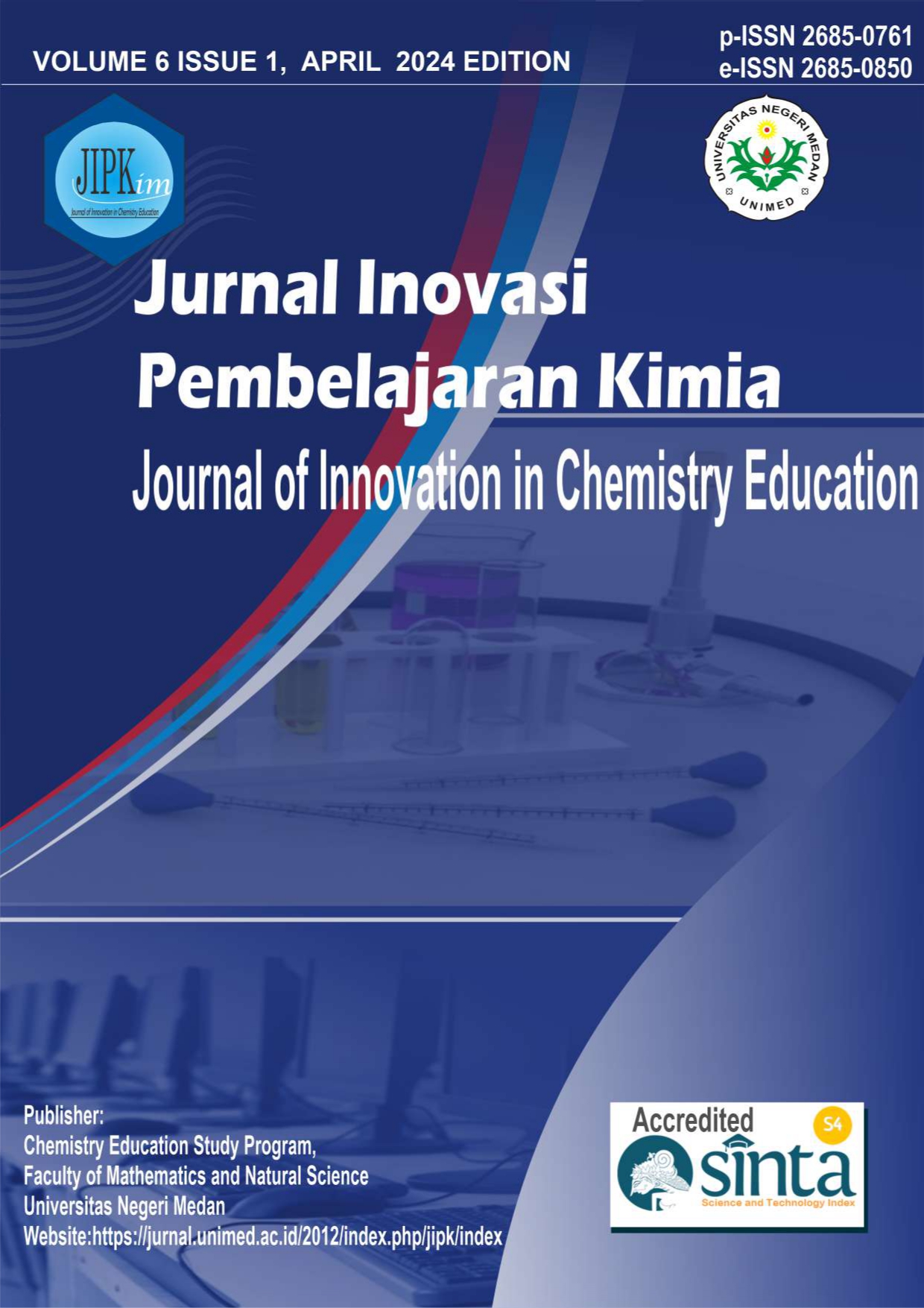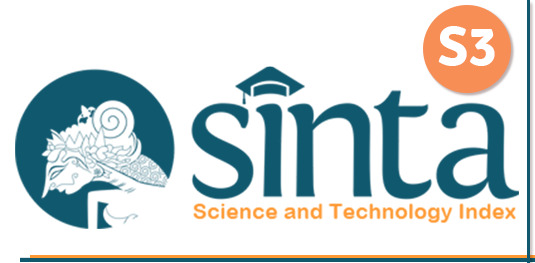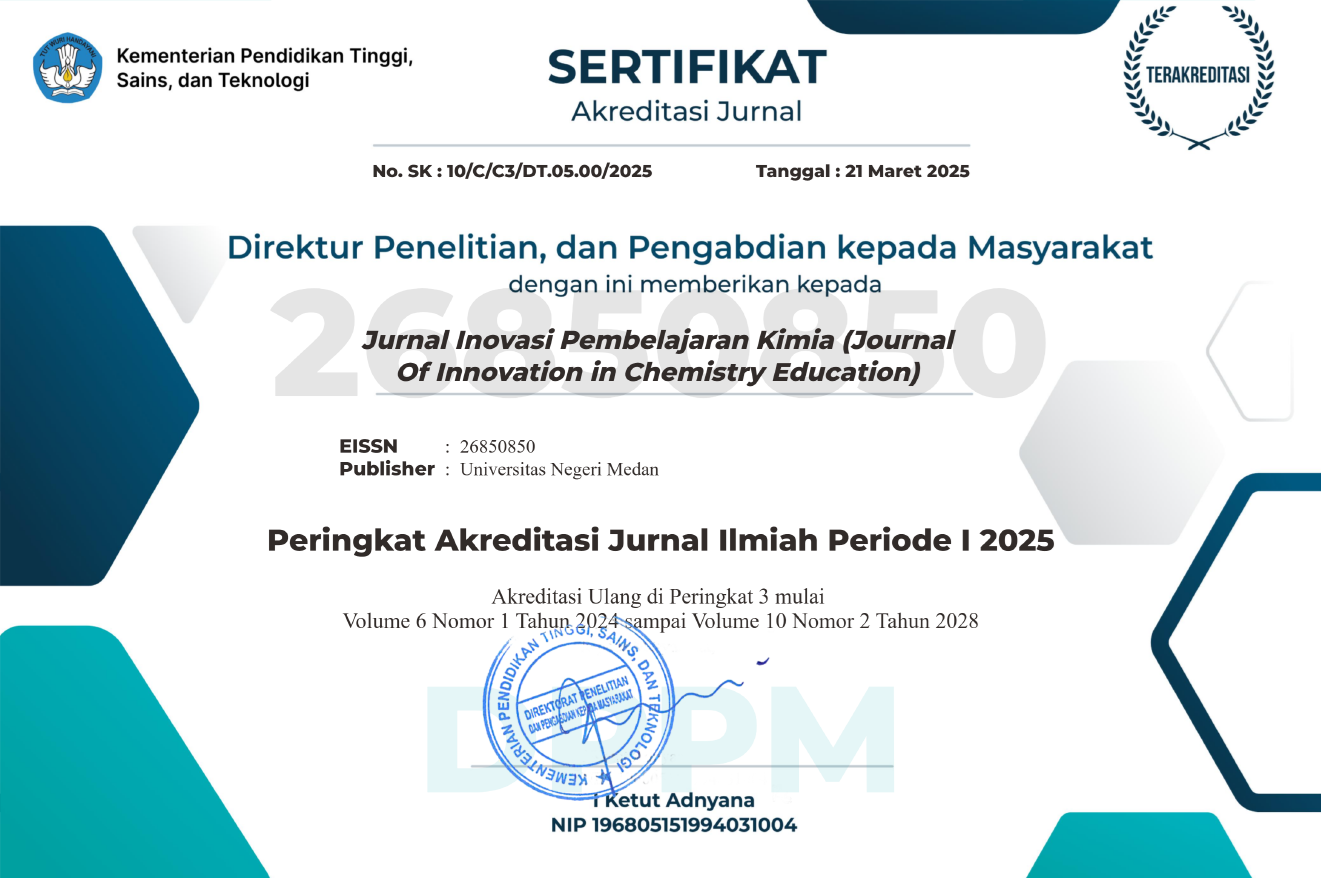Improving Students' HOTs-Literacy Abilities Through Making Summaries at The End of Learning
DOI:
https://doi.org/10.24114/jipk.v6i1.57484Keywords:
HOTs-Literacy, Making Summary, ImprovingAbstract
The reading and writing habits of SMAN 2 Percut Sei Tuan students are relatively low. Therefore, students' literacy and high order thinking abilities are also relatively low. The implementation of scientific literacy-based learning strategies in the form of making summaries at the end of the learning process is expected to improve students' literacy and high order thinking skills. The instruments used are tests in the form of varied multiple choices and essays totaling 8 and 2 questions. The results of data analysis show that students' initial abilities on the 9 of HOTs-Literacy indicators are very low with an average value of 28.49. The summarizing treatment at the end of the learning process succeeded in improving the ability of HOTs-Literacy students in indicators (1) identifying information and data, (2) using information and data, (3) producing explanatory models, (4) distinguishing questions that can be researched scientifically, (5) formulating hypotheses, (6) making predictions, (7) analyzing data, (8) interpreting data, (9) drawing or presenting conclusions, respectively 63.7 ; 66.7; 68.4 ; 64.0 ; 70.9 ; 70.8; 79.2 ; 81.4 and 86.3 %.References
Aida, M. R. (2014). The Students™ Perception on Summary Writing As a Way To Learn Grammar. Journal of English and Education, 2(1), 56“63.
Azizi, D. G. R., & Arrosid, H. B. (2023). Peningkatan Hasil Belajar Menulis Ringkasan Melalui Gerakan Literasi Sekolah pada Siswa Kelas 5 SD. Journal of Education Research, 4(2), 496“501.
Ginting, F. A., Syahputra, R. A., Purba, J., Sutiani, A., & Dibyantini, R. E. (2022). Pengembangan Modul Berbasis Discovery Learning Terintegrasi Literasi Sains Pada Materi Laju Reaksi. Jurnal Inovasi Pembelajaran Kimia (Journal Of Innovation in Chemistry Education), 4(2), 167“176. https://doi.org/10.55904/educenter.v1i4.86
Heong, Y. M., Othman, W. B., Yunos, J. B. M., Kiong, T. T., Hassan, R., & Mohamad, M. M. B. (2011). The Level of Marzano Higher Order Thinking Skillsamong Technical Education Students. International Journal of Social Science and Humanity, 1(2), 121“125. https://doi.org/10.7763/ijssh.2011.v1.20
Ismail, M. I. (2022). Pemberian Rangkuman Sebagai Strategi Pembelajaran. Jurnal Formatif, 1(1), 48“57. https://deepublishstore.com/blog/cara-resume-jurnal
Jahro, I. S., Darmana, A., & Sutiani, A. (2021). Improving Students Science Process and Critical Thinking Skills Using Semi-Research Patterns Practicum. JTK (Jurnal Tadris Kimiya), 6(1), 82“91. https://doi.org/10.15575/jtk.v6i1.12495
Juanda, A. (2017). New Edition Pocket Book Bahasa Indonesia SMP Kelas VII, VIII & IX. Cmedia.
Juliantina, J., & Rahmadena, S. (2019). The Effect of Making Summary on Students™ Writing Achievement of The Students of SMA Swasta Melati Binjai. Jurnal Serunai Bahasa Inggris, 11(1), 38“44.
Kemendikbud, R. I. (2019). Hasil PISA Indonesia 2018: Akses Semakin Meluas Saatnya Tingkatkan Kualitas. Kementrian Pendidikan dan Kebudayaan Republik Indonesia.
Mahyudin, E., & Alihsan, D. A. (2023). Penerapan Strategi Pembelajaran Elaborasi untuk Peningkatan Penguasaan MufradÄt di Madrasah Tsanawiyah. Kalamuna, 4(1), 59“77. https://doi.org/https://doi.org/10.52593/kim.04.1.04
Nasution, A. N., & Jahro, I. S. (2023). Development of Learning Media using iSpring Presenter Based HOTS-Literacy on Acid-Based Materials. Jurnal Inovasi Pembelajaran Kimia (Journal of Innovation in Chemistry Education), 5(1), 74“82. https://jurnal.unimed.ac.id/2012/index.php/jipk
OECD. (2017). PISA for Development Assessment and Analytical Framework: Reading, Mathematics and Science,. OECD Publishing.
OECD. (2023). PISA 2022 Results Learning During “ and From “ Disruption. In OECD Publishing: Vol. II. OECD Publishing. https://www.oecd-ilibrary.org/education/pisa-2022-results-volume-ii_a97db61c-en
Padmadewi, N. N., & Artini, L. P. (2019). Using Scaffolding Strategies in Teaching Writing For Improving Student Literacy in Primary School. The 1st International Conference of Innovation in Education (ICoIE 2018), 178, 156“160. https://doi.org/10.2991/icoie-18.2019.36
Panggabean, F. T. M., Purba, J., & Sinaga, M. (2021). Pengembangan Pembelajaran Daring Terintegrasi Media Untuk Mengukur HOTS Mahasiswa Pada Mata Kuliah Kimia Organik. Jurnal Inovasi Pembelajaran Kimia (Journal Of Innovation in Chemistry Education), 3(1), 11“21. https://doi.org/10.24114/jipk.v3i1.24298
Purba, J., Sutiani, A., Panggabean, F. T. M., Silitonga, P. M., & Susanti, N. (2022). Hubungan Motivasi Belajar dan Kepercayaan Diri dengan Kemampuan Literasi Kimia serta Dampaknya Terhadap HOTS Mahasiswa. Jurnal Inovasi Pembelajaran Kimia (Journal Of Innovation in Chemistry Education), 4(2), 191“201. https://doi.org/10.24114/jipk.v4i2.39459
Rohman, F. (2019). Teori Belajar Elaborasui (Suatu Strategi Pembelajaran). Jurnal Pembangunan Pancabudi, 5(1), 996“1010. https://jurnal.pancabudi.ac.id/index.php/alhadi/article/view/774
Roihatun, R. (2022). Peningkatan Hasil Belajar Materi Merangkum Dalam Diskusi Melalui Model Think Pair Share. Dinamika: Jurnal Praktik Penelitian Tindakan Kelas Pendidikan Dasar Dan Menengah, 12(1), 11“18.
Rosta, R. (2020). Upaya Meningkatkan Kemampuan Meringkas Teks yang Didengar Siswa Sekolah Dasar melalui Metode Kooperatif Tipe STAD. PEDADIDAKTIKA: Jurnal Ilmiah Pendidikan Guru Sekolah Dasar, 7(3), 46“57. https://doi.org/10.17509/pedadidaktika.v7i3.28024
Simamora, K. F. (2022). Kemampuan HOTS Siswa Melalui Model PjBL Ditinjau dari Kemampuan Literasi Kimia Siswa. Jurnal Inovasi Pembelajaran Kimia (Journal Of Innovation in Chemistry Education), 4(1), 55“65. https://doi.org/10.24114/jipk.v4i1.33588
Sofyan, A., & Lataami, A. (2020). Keterampilan Menganalisis dan Keterampilan Berpikir Kreatif pada Pelajaran Kelas X SMA Negeri 11 Konawe Selatan Melalui Model Pembelajaran Problem-Based Learning (PBL). Amanah: Jurnal Amanah Pendidikan Dan Pengajaran, 1(3), 163“167. https://jurnal.pgrisultra.or.id/ojs/
Thompson, C. (2011). Critical Thinking Across The Curriculum: Process Over Output. International Journal of Humanities and Social Science, 1(9), 1“7.
Wibowo, T., & Ariyatun. (2020). Kemampuan Literasi Sains Pada Siswa SMA Menggunakan Pembelajaran Kimia Berbasis Etnosains. Edusains, 12(2), 214“222. https://doi.org/https://doi.org/10.15408/es.v12i2.16382













